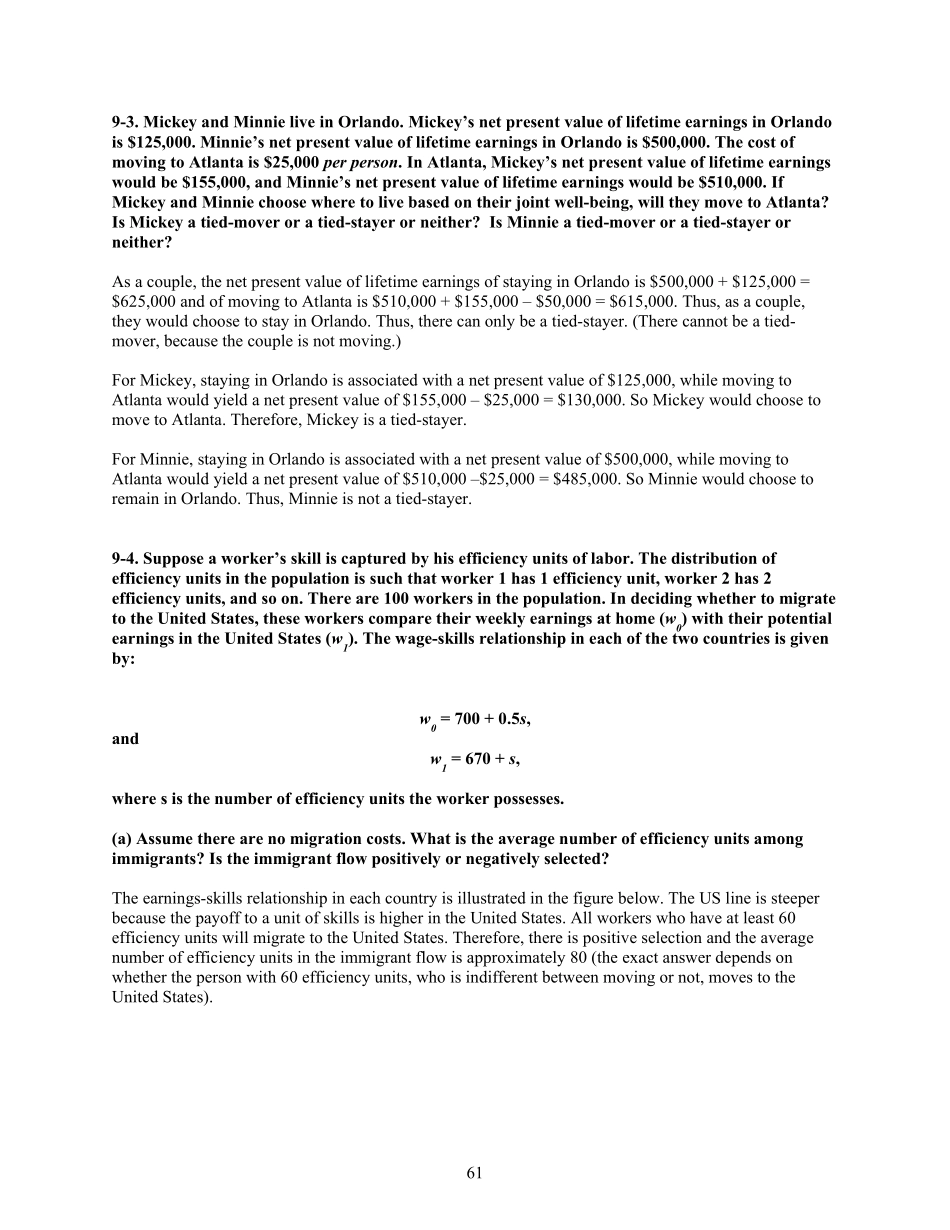60CHAPTER 9 9-1. Suppose a worker with an annual discount rate of 10 percent currently resides in Pennsylvania and is deciding whether to remain there or to move to Illinois. There are three work periods left in the life cycle. If the worker remains in Pennsylvania, he will earn $20,000 per year in each of the three periods. If the worker moves to Illinois, he will earn $22,000 in each of the three periods. What is the highest cost of migration that a worker is willing to incur and still make the move? The worker must compare the present value of staying in Pennsylvania to the present value of moving to Illinois. A worker will move if the present value of earnings in Illinois minus the costs of moving there exceed the present value of earnings in Pennsylvania: 74.710,54$)1.1(000,201.1000,20000,202 =++=PAPV and 82.181,60$)1.1(000,221.1000,22000,222 =++=ILPV The worker will move, therefore, if PVIL – C > PVPA, where C denotes migration costs. Thus, the worker moves if C < 60,181.82 - 54,710.74 = $5,471.08 9-2. Nick and Jane are married. They currently reside in Minnesota. Nick’s present value of lifetime earnings in his current employment is $300,000, and Jane’s present value is $200,000. They are contemplating moving to Texas, where each of them would earn a lifetime income of $260,000. The couple’s cost of moving is $10,000. In addition, Nick very much prefers the climate in Texas to that in Minnesota, and he figures that the change in climate is worth an additional $2,000 to him. Jane, on the other hand, prefers Minnesota’s frigid winters, so she figures she would be $2,000 worse off because of Texas’s blistering summers. Should they move to Texas? Yes. The “climatic” aspects...


